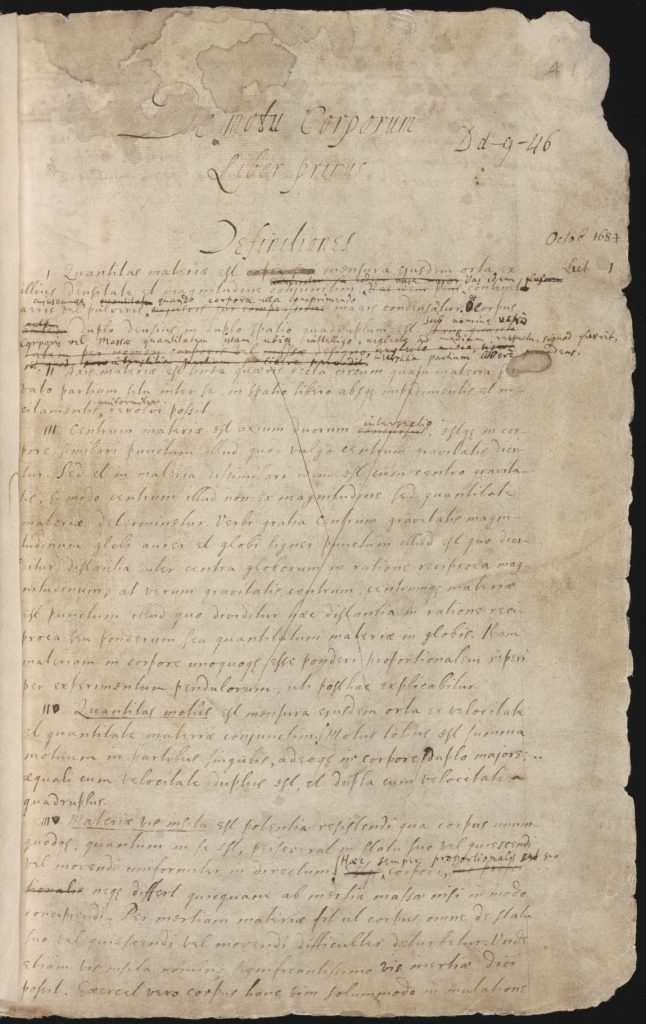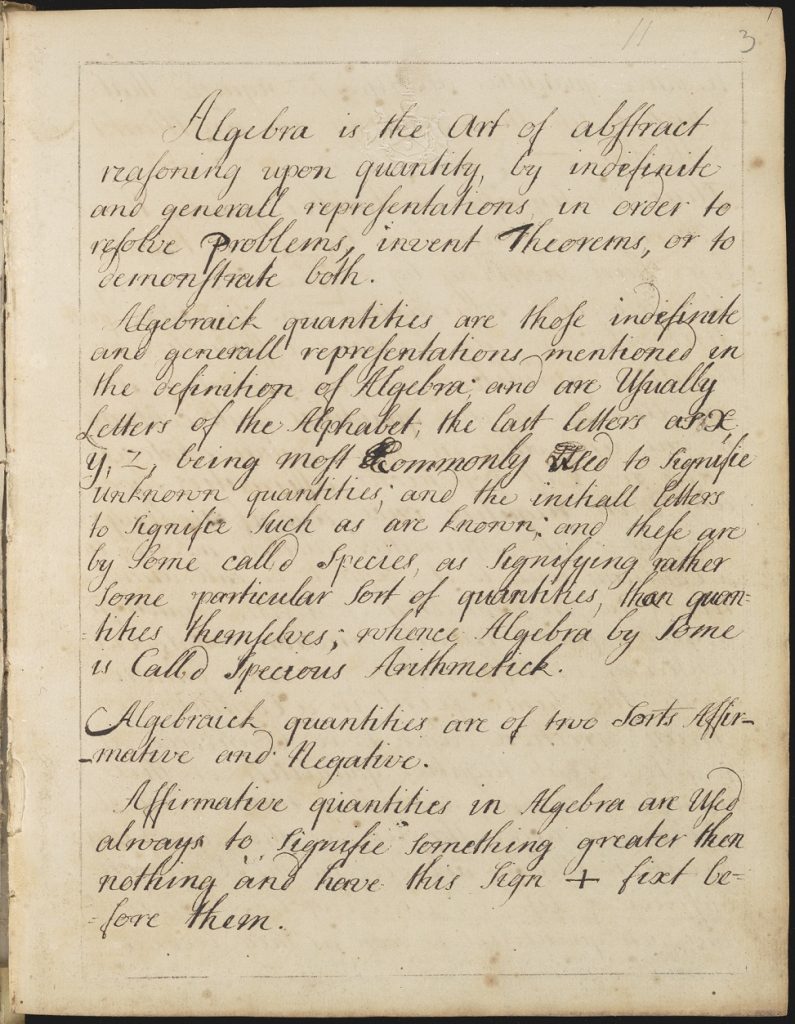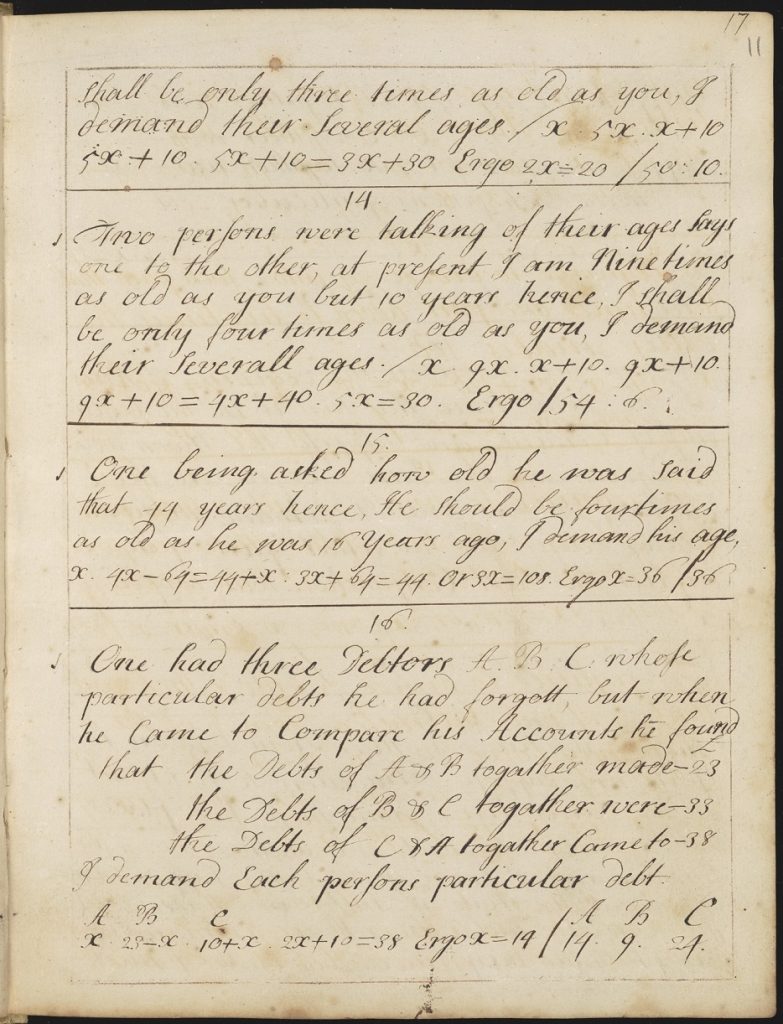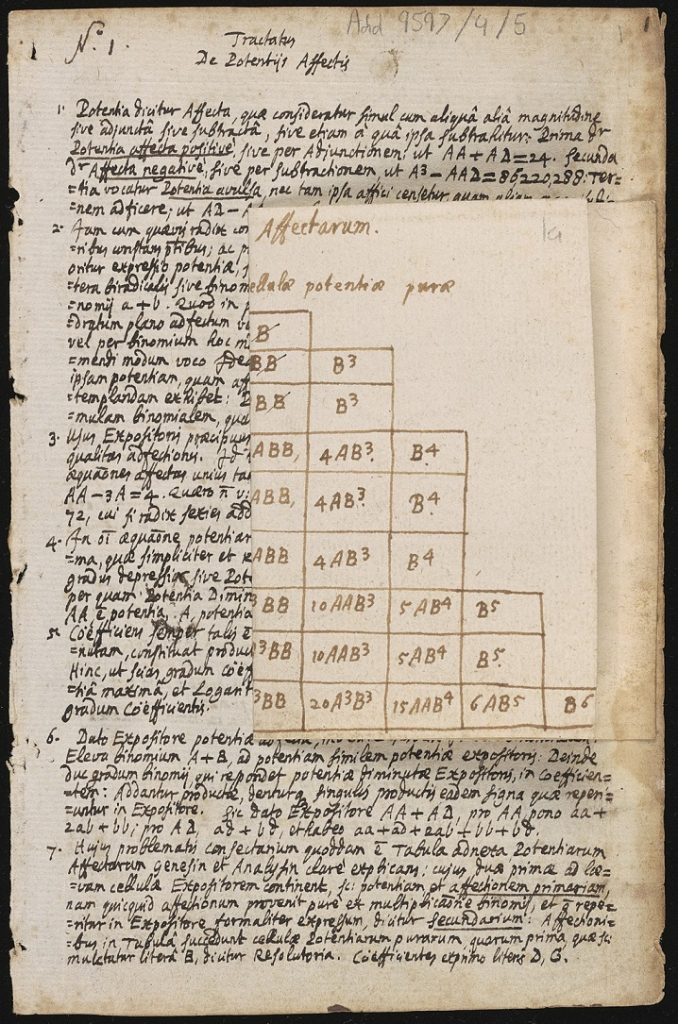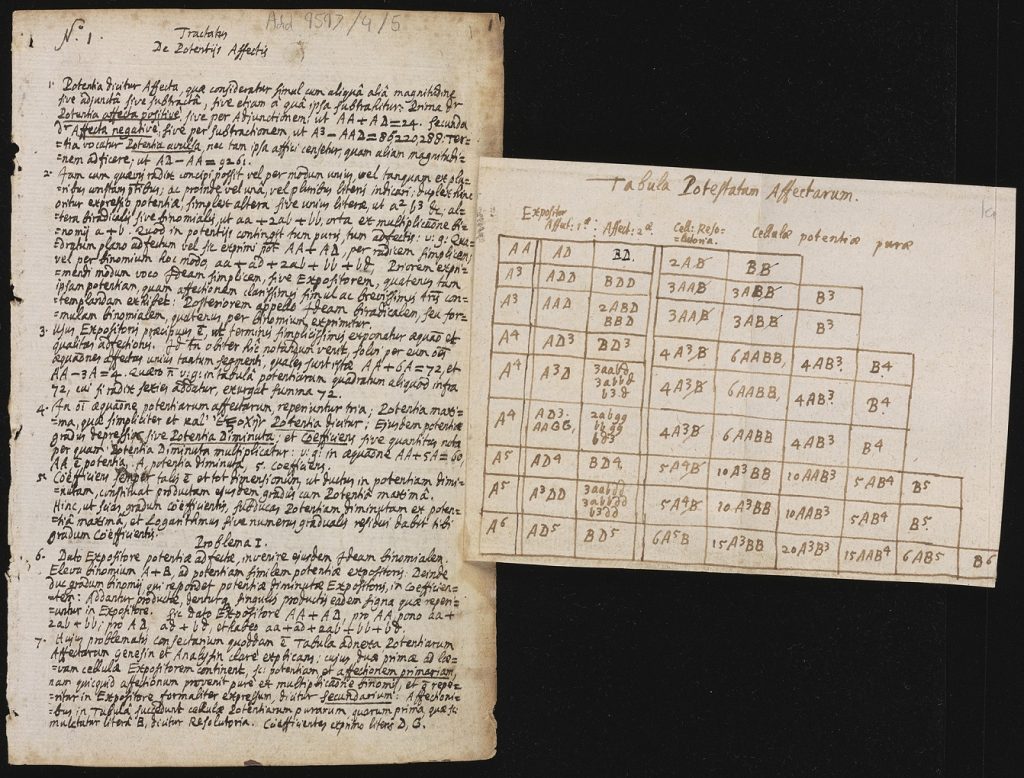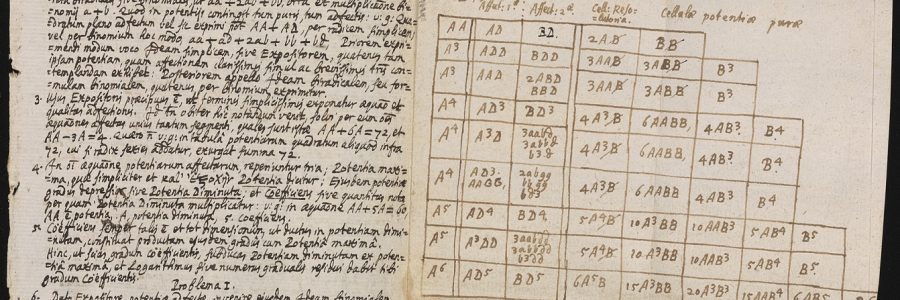
Early modern mathematics: digitising the Macclesfield Collection
Over the last 15 months staff from Archives & Modern Manuscripts, Conservation & Collection Care, Digital Content & Library and Development & Friends of the Library have been working on a project to digitise the Macclesfield Collection, a large archive of letters and papers principally created by John Collins (1625-83) and William Jones (1675-1749). As well as being mathematicians in their own right; both men corresponded with leading scientific figures of their day and so the collection includes autograph material by Isaac Newton, Edmund Halley, Henry Briggs, Roger Cotes, Henry Oldenburg and Robert Hooke.
Aside from Newton’s papers and correspondence, the collection is arranged by subject and spans: mathematics; navigation (reflecting Jones’ earlier career at sea); geography; finance (Jones started his working life in a counting house); physics; optics; and astronomy (an interest and pastime of George Parker, the second Earl of Macclesfield (c. 1697-1764); among others. The collection also represents a unique snapshot of the work of a tutor (William Jones) in the household of a late seventeenth century nobleman (George Parker): it is very unusual for such a large volume of teacher’s and pupils’ work to survive in manuscript. The Macclesfield Collection remained in the library at Shirburn Castle, the ancestral home of Earls of Macclesfield until 2000 when it was bought through Sotheby’s by Cambridge University Library, before a series of auctions of the wider library collections took place (2004-8).
The images above are some pages from an exercise book labelled ‘Questions in Algebra’, thought to have belonged to one of Jones’s pupils. Can you solve the problems posed?
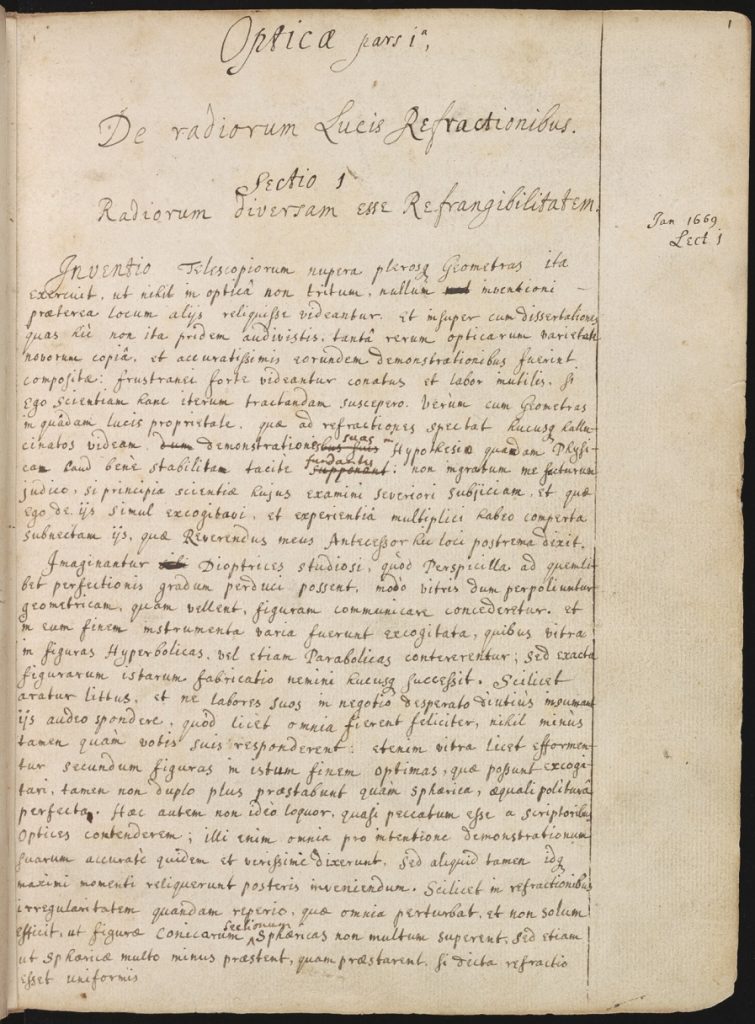
We also decided to include in the project Newton’s university lectures which he was required to give as Lucasian Professor of Mathematics and deposit in the University Library. On the left is the first page of Lecture 1 on Optics delivered in January 1669.
The Portsmouth Papers comprised of Newton manuscripts was published in 2011 to launch Cambridge Digital Library. This digitisation project has been generously funded by the Bank of America and on its completion later this year, over 30,000 images will have been added to the Cambridge Digital Library. Naturally, such a large project requires some workflow planning and was organised into distinct phases.
The first step was to create an inventory for each of the 982 items. A description of the item, the number of folios, any specific instructions on imaging, and identification of possible conservation need was entered on to a series of spreadsheets by archivist Karen Davies. One primary consideration was how best to replicate the viewing of the physical item in a digital format, particularly when there were folded inserts and the occasional moving part. This example is taken from a manuscript labelled ‘Tractatus De Potentiis Affectis’ (which appears to be analysis and problems derived from a classificatory table of the emotions – see two images below).
Working in batches of approximately 5000 images at a time, the spreadsheets were passed over to photographer James Costin to begin work on capturing high quality images; an occasionally tricky task when confronted with tightly bound volumes where the text edge was very close to the spine causing issues of legibility, as seen in this manuscript of Newton’s notes ‘De motu Corporum’ at the end of this post.
Items identified in need of conservation treatment prior to digitisation were passed to conservator Ngaio Vince-Dewerse. Issues dealt with by Ngaio have included repairing items that have been damaged through use or degradation/aging, easing open tight bindings to allow for imaging at 90 degrees, providing handling advice to Digital Content Unit, and rehousing of items to ensure they are stored and accessed safely after imaging.
Once items have been photographed, the images are processed, and appropriate metadata linked to each image file to allow for discovery and navigation of content once the images are uploaded to the Cambridge Digital Library. The final stage in the workflow plan are the quality assurance (QA) checks undertaken by the Digital Library and the archivist: digital images are reviewed to ensure they are legible (within any constraints imposed by the physical document), that they follow the natural order of the physical item and are not jumbled up, and that the metadata is correct.
The project started in January 2020 but much of the work was interrupted by the pandemic with tasks being only partially completed or unable to commence until staff were readmitted to the building in July and August. An initial completion date of February 2021 has now been extended to October 2021. However, as each batch of 5000 images completes the final QA checks, they are being released onto the Cambridge Digital Library website providing a valuable resource for research devoted to the history of 17C and 18C British mathematical science and much more: https://cudl.lib.cam.ac.uk/collections/macclesfield/1
